SHOULD YOU TAKE PreP?
A Complete Guide To Figuring It Out
PreP Medication For HIV
Is It For You?
Author & columnist, featured on HBO, NPR, and in The New York Times
Should you take PrEP?
The answer is far from universal. PrEP, or Pre-exposure Prophylaxis, has emerged as a groundbreaking medical development in the prevention of HIV. Yet, as with any medical intervention, it's crucial to understand what it involves, its benefits and drawbacks, and how it aligns with your personal health situation and lifestyle.
This comprehensive guide provides a deep dive into the world of PrEP.
We'll begin by defining what PrEP is and how it functions, then delve into who can (and cannot) use it. We'll explore both the short and long-term side effects, and whether you should consider taking it, including a balanced discussion on the pros and cons.
Once the groundwork is laid, we'll navigate through more specific topics. From deciding between pills or shots, to understanding how doctors determine if it's suitable for you, we've got you covered.
A crucial aspect of this guide also involves the nitty-gritty details of PrEP's effectiveness, backed by robust research studies.
We'll also tackle the practical aspects like what to do if you forget a dose, why condoms are still necessary even when on PrEP, and the usage statistics among different communities.
Finally, we understand that accessibility is paramount, so we'll provide resources on where to get PrEP, including a list of free clinics across the top 50 markets (with links!).
Whether you're considering PrEP for yourself or just want to increase your understanding, this guide will provide a comprehensive resource to help you make an informed decision.
What, Who, How
Should You Take PreP?
What Are The Chances of Getting HIV Sexually?
How Do I Get PreP If I Decide I Want It?
How Will My Doctor Decide If I Should Be On It?
What Are The Chances of Getting HIV From a One Night Stand?
Effectiveness
Research Studies Proving PreP's Effectiveness
What Happens To Prep’s Effectiveness If I Don’t Take It As Directed
What If I Forget To Take My Prep Pill?
If Prep Is So Effective, Why Do We Still Need Condoms?
What Percent Of Gay Men On Prep Use Condoms?
Where Can I Get PreP For Free?
A List Of Free Prep Clinics (With Links!) In The Top 50 Markets
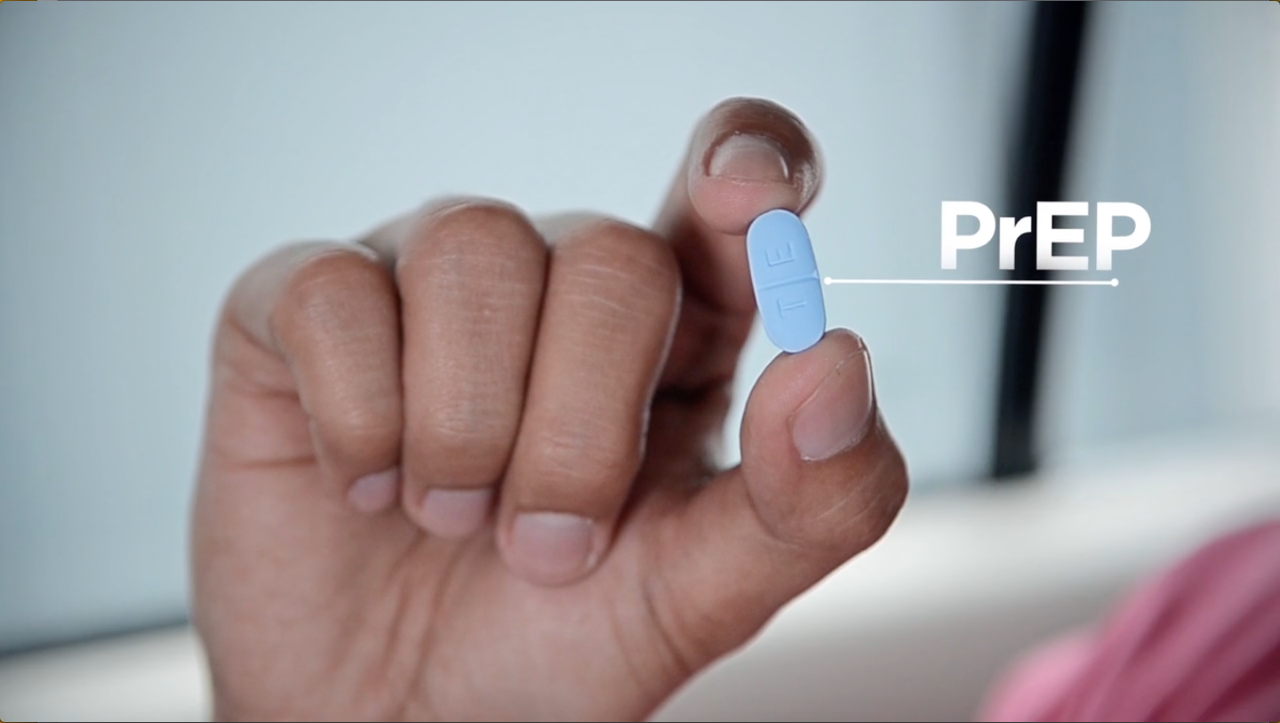
What is PrEP?
PrEP stands for pre-exposure prophylaxis. It is a medication that can help prevent HIV infection. PrEP is taken by people who are HIV-negative but who are at high risk of becoming infected.
PrEP works by preventing HIV from infecting cells in the body. PrEP does this by blocking the enzyme that HIV needs to replicate. There are two main types of PrEP medication: Truvada and Descovy. Truvada is a combination of two drugs, tenofovir disoproxil fumarate (TDF) and emtricitabine (FTC).
Descovy is a newer medication that contains only TDF.
PrEP is very effective at preventing HIV infection. When taken as prescribed, PrEP can reduce the risk of HIV infection by up to 99%. PrEP is not a 100% effective, so it is important to continue using other HIV prevention methods, such as condoms, when taking PrEP.
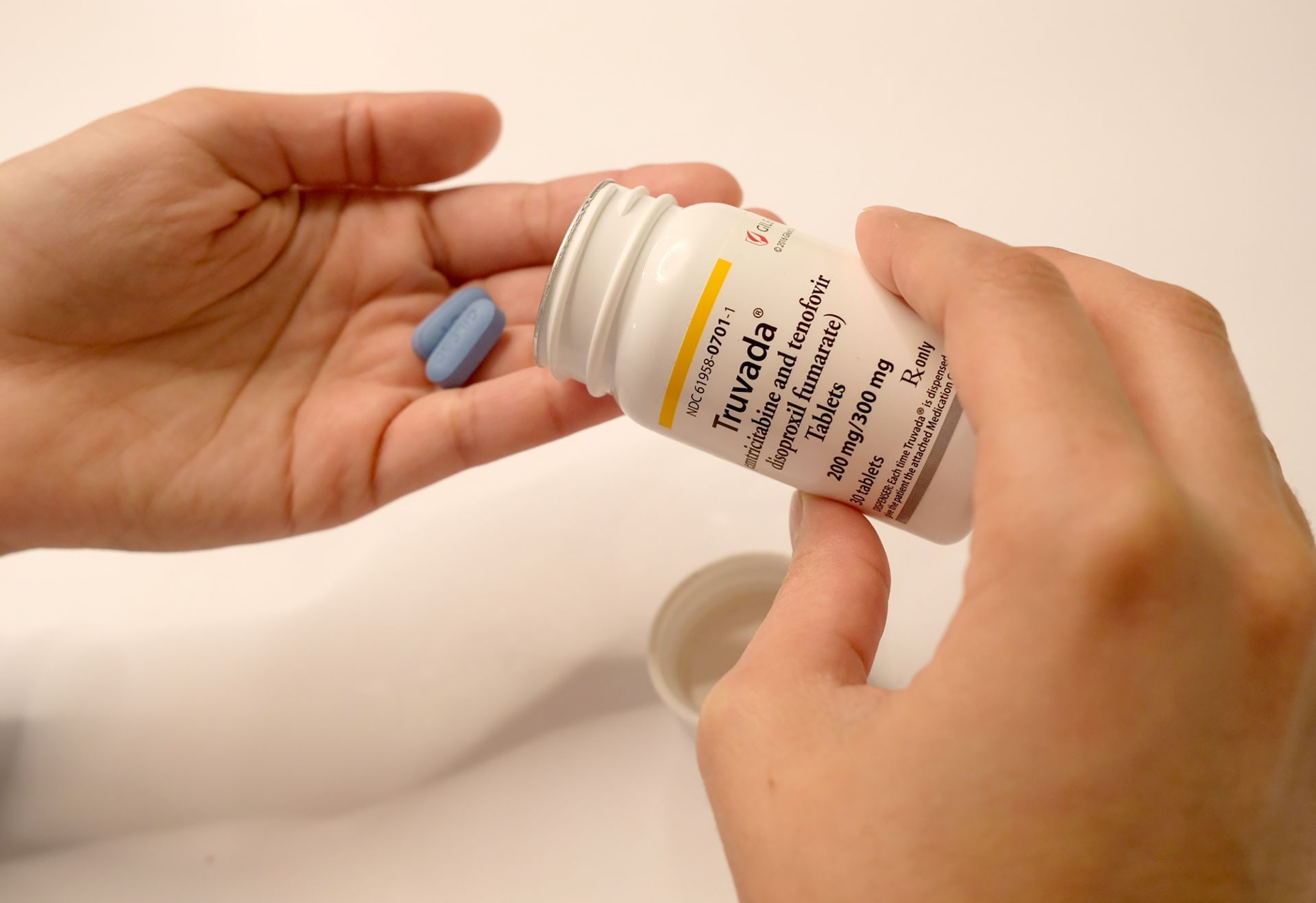
How does PreP work?
PrEP works by preventing HIV from infecting cells in the body. PrEP does this by blocking the enzyme that HIV needs to replicate. This enzyme is called reverse transcriptase. Reverse transcriptase is responsible for copying HIV RNA into DNA, which is the genetic material of the virus. By blocking reverse transcriptase, PrEP prevents HIV from reproducing and spreading throughout the body.
There are two main types of PrEP medication: Truvada and Descovy.
Mechanism of Action: Truvada
- Truvada contains two drugs: emtricitabine and tenofovir disoproxil fumarate (TDF).
- Emtricitabine is a nucleoside reverse transcriptase inhibitor (NRTI). NRTIs work by blocking the HIV virus from copying its genetic material.
- Tenofovir is a nucleotide reverse transcriptase inhibitor (NtRTI). NtRTIs work by blocking the HIV virus from copying its genetic material.
Mechanism of Action: Descovy
Descovy contains only one drug: tenofovir alafenamide (TAF).
- TAF is a newer version of tenofovir that is less likely to cause kidney problems. TAF also works by blocking the HIV virus from copying its genetic material.
Both Truvada and Descovy are highly effective at preventing HIV infection. However, Descovy may be a better choice for people who are at risk for kidney problems.

Who can take PrEP?
PrEP is recommended for people who are HIV-negative and who are at high risk of becoming infected with HIV. This includes people who:
- Have sex with men who have sex with men (MSM)
- Are transgender women
- Have sex with people who are HIV-positive
- Use injection drugs
- Have a partner who is HIV-positive
If you are not sure if you are at high risk of HIV infection, talk to your healthcare provider. They can help you assess your risk and determine if PrEP is right for you.
There are some people who should not take PrEP, including:
- People who are allergic to tenofovir or emtricitabine, the two drugs in PrEP
- People with severe kidney problems
- People who are pregnant or breastfeeding
- People who have a weakened immune system, such as people with HIV or cancer
- People who have hepatitis B or C

Short Term Side Effects
The most common side effects of PrEP are:
- Headache: 25% of people who take PrEP experience headaches. Headaches are usually mild and go away on their own within a few days.
- Nausea: 20% of people who take PrEP experience nausea. Nausea is usually mild and goes away on its own within a few days.
- Diarrhea: 10% of people who take PrEP experience diarrhea. Diarrhea is usually mild and goes away on its own within a few days.
- Vomiting: 5% of people who take PrEP experience vomiting. Vomiting is usually mild and goes away on its own within a few days.
- Fatigue: 4% of people who take PrEP experience fatigue. Fatigue is usually mild and goes away on its own within a few days.
- Stomach pain: 3% of people who take PrEP experience stomach pain. Stomach pain is usually mild and goes away on its own within a few days.
- Loss of appetite: 2% of people who take PrEP experience loss of appetite. Loss of appetite is usually mild and goes away on its own within a few days.
- Weight loss: 1% of people who take PrEP experience weight loss. Weight loss is usually mild and goes away on its own within a few days.
- Increased risk of kidney stones: 1% of people who take PrEP may be at an increased risk of developing kidney stones. Kidney stones are more likely to occur in people who already have kidney stones or other kidney problems.
- Decreased bone mineral density: 1% of people who take PrEP may experience a decrease in bone mineral density. Decreased bone mineral density is more likely to occur in people who are older, have a family history of osteoporosis, or are taking other medications that can affect bone health.
It is important to note that these are just the most common side effects of PrEP. There are other, less common side effects that may occur. If you are experiencing any side effects, talk to your doctor.
The severity of side effects from PrEP can vary from person to person. Some people may experience only mild side effects, while others may experience more severe side effects. If you experience any side effects that are severe or do not go away, talk to your doctor.

Long Term Side Effects
PrEP has been studied extensively, and the long-term effects of the medication are generally considered to be safe.
However, there are a few potential long-term side effects of PrEP that are still being studied. These include:
- Kidney problems: PrEP can cause a small increase in the risk of kidney problems. This risk is higher for people who have existing kidney problems or who take other medications that can damage the kidneys.
- Bone loss: PrEP can also cause a small decrease in bone density. This risk is higher for people who are older, who have a family history of osteoporosis, or who take other medications that can weaken the bones.
- Birth defects: PrEP is not recommended for pregnant women. There is a small risk that PrEP could cause birth defects.
If you are considering taking PrEP, it is important to talk to your doctor about the potential risks and benefits of the medication. Here are some additional things to keep in mind about the long-term effects of PrEP:
- The long-term effects of PrEP are still being studied. More research is needed to determine the full extent of the risks and benefits of the medication.
- If you experience any side effects while taking PrEP, you should talk to your doctor.
- It is important to get regular checkups while you are taking PrEP. This will help your doctor monitor your health and make sure that you are not experiencing any serious side effects.

Pros & Cons of Taking PreP
The Pros of Taking PrEP
There are many pros to taking PrEP. Here are some of the most important ones:
PrEP can significantly reduce the risk of HIV infection.
Studies have shown that PrEP can reduce the risk of HIV infection by up to 99%. This means that if you take PrEP as prescribed, you are very unlikely to get HIV.
PrEP can give gay men peace of mind and allow them to have more carefree sex.
Knowing that you are taking PrEP can help to reduce anxiety about HIV infection and allow you to focus on enjoying your sex life.
PrEP can help to reduce the stigma associated with HIV.
By taking PrEP, you can help to break down the stigma associated with HIV and show that HIV is a preventable disease.
PrEP can help to prevent the spread of HIV.
When more people take PrEP, it can help to slow the spread of HIV in the community.
PrEP can help to save lives.
By preventing HIV infection, PrEP can help to save lives.
Reduce the risk of other sexually transmitted infections (STIs).
Studies have shown that people who take PrEP are less likely to get other STIs.
Improve mental health.
People who take PrEP report feeling less anxious and stressed about HIV.
Increase sexual satisfaction.
People who take PrEP report feeling more confident and comfortable about their sex lives.
Overall, PrEP is a safe and effective way to prevent HIV infection. If you are at high risk of getting HIV, PrEP may be a good option for you. Talk to your doctor to learn more about PrEP and whether it is right for you.
Here are some additional things to consider when making the decision of whether or not to take PrEP:
- Your individual risk of HIV infection.
- Your lifestyle and sexual habits.
- Your access to healthcare and financial resources.
- Your personal values and beliefs.
The Cons of Taking PrEP
There are a number of cons to taking PrEP. Here are some of the most important ones:
PrEP can be expensive.
The cost of PrEP can vary depending on your insurance coverage. However, there are programs available to help people who cannot afford PrEP.
PrEP can have side effects.
The most common side effects of PrEP are nausea, diarrhea, and fatigue. These side effects are usually mild and go away on their own. However, in rare cases, PrEP can cause more serious side effects, such as kidney problems and bone loss.
PrEP can be inconvenient to take every day.
PrEP is a daily medication. If you forget to take it, you could be at risk of HIV infection.
PrEP can be misused, leading to a false sense of security and increased risk-taking behavior.
Some people who take PrEP may think that they are invincible and engage in risky sexual behaviors. This can lead to HIV infection.
PrEP can lead to complacency about HIV prevention.
Some people who take PrEP may become complacent about HIV prevention and stop using other methods of protection, such as condoms. This can increase their risk of HIV infection.
PrEP can stigmatize people who take it.
Some people may view people who take PrEP as being promiscuous or irresponsible. This can lead to stigma and discrimination.
Conclusion
The decision of whether or not to take PrEP is a personal one. People who are considering taking PrEP should weigh the pros and cons carefully and talk to their doctor before making a decision.
It is important to remember that PrEP is just one tool in the fight against HIV. It is important to continue to practice safe sex, including using condoms, even if you are taking PrEP.
Here are some additional things to consider when making the decision of whether or not to take PrEP:
- Your individual risk of HIV infection.
- Your lifestyle and sexual habits.
- Your access to healthcare and financial resources.
- Your personal values and beliefs.
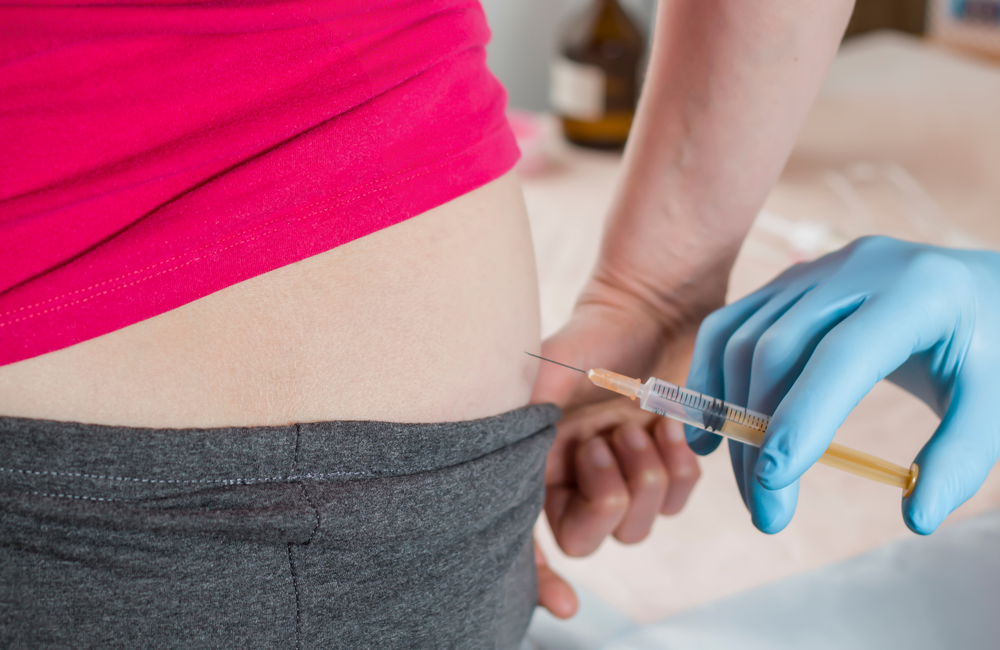
Pills or Shots?
There are two main ways to take PrEP: pills and shots.
Pills
The most common way to take PrEP is by taking two pills a day. The pills contain two antiretroviral drugs: tenofovir disoproxil fumarate (TDF) and emtricitabine (FTC). These drugs work by blocking HIV from multiplying in the body.
When to take PrEP pills
PrEP pills should be taken every day, at the same time, preferably in the morning. It is important to take PrEP pills consistently to ensure that they are effective.
Should You Take It With Food?
It is not necessary to take PrEP pills with food. However, some people may find that taking the pills with food helps to reduce stomach upset.
Price range if you were to pay for them out of pocket
The cost of PrEP pills varies depending on the manufacturer and the pharmacy. Out-of-pocket costs can range from $1,000 to $2,000 per month.
How much of the bill insurance would typically cover
Most insurance plans cover the cost of PrEP pills. However, some plans may have a copay or deductible. It is important to check with your insurance company to find out how much you will have to pay for PrEP pills.
Other things to consider when taking PrEP pills
- PrEP pills can interact with other medications. It is important to tell your doctor about all of the medications you are taking before starting PrEP.
- PrEP pills can cause side effects, such as nausea, vomiting, and diarrhea. These side effects are usually mild and go away on their own. However, if you experience any side effects that are severe or bothersome, you should talk to your doctor.
Shots
A newer form of PrEP is a monthly shot called cabotegravir. Cabotegravir is a long-acting antiretroviral drug that is injected into the muscle.
It is as effective as taking pills every day, but it does not require daily adherence. ere is more information about taking PrEP shots:
How to administer them
PrEP shots are administered by a healthcare provider.
The first shot is given at the doctor's office, and then subsequent shots are given every 2 months at a pharmacy or other healthcare setting.
How often do you need the shot?
PrEP shots are given once every 2 months.
Where in the body does the needle go
The needle goes into the muscle of the buttocks.
Take The Shot With Food?
It is not necessary to take PrEP shots with food.
Price range of shots if you were to pay for them out of pocket
The cost of PrEP shots varies depending on the manufacturer and the pharmacy. Out-of-pocket costs can range from $1,500 to $2,000 every 2 months.
How much of the bill insurance would typically cover
Most insurance plans cover the cost of PrEP shots. However, some plans may have a copay or deductible. It is important to check with your insurance company to find out how much you will have to pay for PrEP shots.
Other things to consider when taking PrEP shots
- PrEP shots can interact with other medications. It is important to tell your doctor about all of the medications you are taking before starting PrEP.
- PrEP shots can cause side effects, such as pain, redness, and swelling at the injection site. These side effects are usually mild and go away on their own. However, if you experience any side effects that are severe or bothersome, you should talk to your doctor.
- PrEP shots are not a cure for HIV. If you think you may have been exposed to HIV, you should get tested and start treatment immediately.
Which method is more effective?
Both pills and shots are effective at preventing HIV infection when taken as directed. However, there is some evidence that shots may be more effective than pills.
A study published in the journal The Lancet found that people who took cabotegravir shots were 69% less likely to get HIV than people who took pills every day. Here is more information about which method of PrEP is more effective:
Research Studies Comparing Pills & Shots
There have been a number of studies that have compared the effectiveness of PrEP pills and shots.
- The HPTN 083 study was a large, randomized clinical trial that compared the effectiveness of PrEP pills and shots in men who have sex with men (MSM). The study found that PrEP pills were 99% effective at preventing HIV infection, while PrEP shots were 69% effective.
- The HPTN 084 study was a large, randomized clinical trial that compared the effectiveness of PrEP pills and shots in cisgender women. The study found that PrEP pills were 96% effective at preventing HIV infection, while PrEP shots were 73% effective.
Conclusion
Based on the available research, it appears that PrEP pills are more effective than PrEP shots at preventing HIV infection. However, it is important to note that both methods of PrEP are effective when taken as directed.
Other factors to consider
In addition to effectiveness, there are other factors to consider when choosing a method of PrEP, such as cost, convenience, and side effects.
- Cost
The cost of PrEP pills and shots varies depending on the manufacturer and the pharmacy. Out-of-pocket costs can range from $1,000 to $2,000 per month for pills, and $1,500 to $2,000 every 2 months for shots.
- Convenience
PrEP pills are more convenient than PrEP shots because they can be taken at home. PrEP shots, on the other hand, require a monthly visit to a healthcare provider.
- Side effects
The most common side effects of PrEP pills are nausea, vomiting, and diarrhea. These side effects are usually mild and go away on their own. However, some people may experience more serious side effects, such as kidney problems or liver damage. PrEP shots are generally well-tolerated, but they can cause side effects such as pain, redness, and swelling at the injection site.
Summary of features and benefits of each method?
Pills
Features:
- Easy to take
- Convenient
- Can be taken at home
- Less expensive than shots
- More widely available than shots
Benefits:
- Highly effective at preventing HIV infection
- Can be taken by people who have a busy schedule or who travel frequently
- Can be taken by people who do not have easy access to healthcare
Drawbacks:
- Requires daily adherence
- Can interact with other medications
- Can cause side effects, such as nausea, vomiting, and diarrhea
Shots
Features:
- Does not require daily adherence
- May be more effective than pills at preventing HIV infection
- Less likely to interact with other medications
Benefits:
- Can be taken by people who have difficulty remembering to take pills every day
- May be more effective than pills at preventing HIV infection
- Less likely to interact with other medications
Drawbacks:
- Requires a monthly visit to a healthcare provider
- Can be more expensive than pills
- Can cause side effects, such as pain, redness, and swelling at the injection site
Ultimately, the best way to decide which method of PrEP is right for you is to talk to your doctor. Your doctor can help you assess your risk for HIV infection and recommend the best method of PrEP for you.
Which method is right for you?
The best way to decide which method of PrEP is right for you is to talk to your doctor. Your doctor can help you assess your risk for HIV infection and recommend the best method of PrEP for you.
Here are some additional things to consider when choosing a method of PrEP:
- Your lifestyle: If you travel frequently or have a busy schedule, pills may be a better option for you. Shots, on the other hand, may be a better option if you have difficulty remembering to take pills every day.
- Your budget: Pills are less expensive than shots.
- Your access to healthcare: If you do not have easy access to healthcare, pills may be a better option for you. Shots require a monthly visit to a healthcare provider.
Mechanism of Action Between Pills & Shots
Both pills and injectables work by preventing HIV from infecting cells in the body. However, they do this in different ways.
Mechanism of Action: PreP Pills
PrEP pills contain two drugs: tenofovir disoproxil fumarate (TDF) and emtricitabine (FTC). These drugs are called antiretrovirals, and they work by stopping HIV from replicating.
When HIV enters the body, it attaches to cells called CD4 cells. The virus then uses the CD4 cell's machinery to make copies of itself. TDF and FTC work by blocking two of the enzymes that HIV needs to replicate.
Tenofovir disoproxil fumarate (TDF)
TDF is a nucleoside analog reverse transcriptase inhibitor (NRTI). It works by blocking the enzyme reverse transcriptase, which is needed by HIV to make copies of its genetic material.
Emtricitabine (FTC)
FTC is also a NRTI. It works by blocking the enzyme integrase, which is needed by HIV to integrate its genetic material into the DNA of the host cell.
Mechanism of Action: PrEP Shots
PrEP shots contain a single drug called cabotegravir (CAB). CAB is a long-acting antiretroviral that is injected into the muscle every two months. CAB works by preventing HIV from entering cells in the first place.
When HIV comes into contact with CAB, the drug binds to the virus and prevents it from attaching to cells. This prevents HIV from infecting cells and spreading throughout the body.
CAB is a integrase inhibitor. It works by blocking the enzyme integrase, which is needed by HIV to integrate its genetic material into the DNA of the host cell.
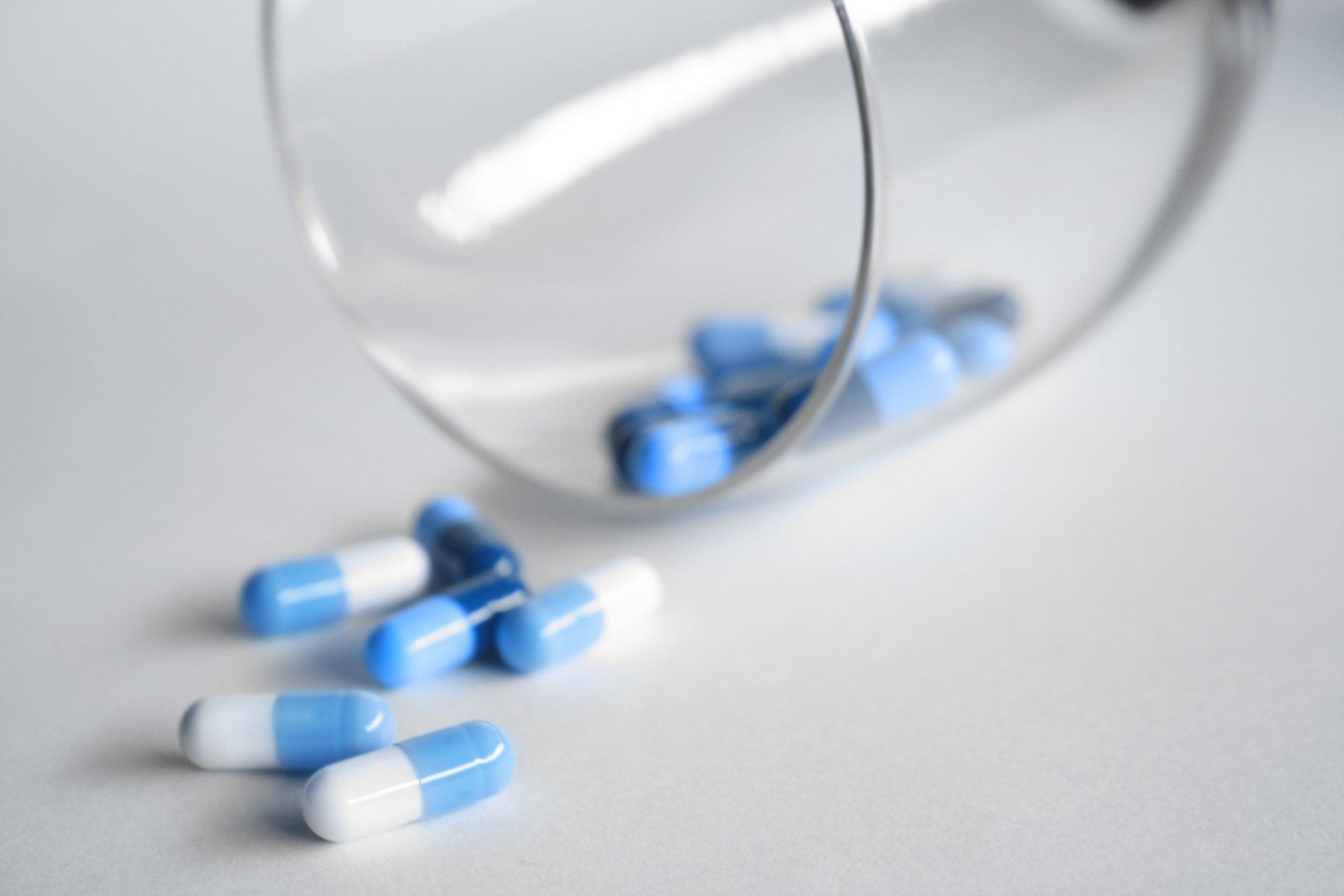
How Do I Get PreP If I Decide I Want It?
You can get PrEP from a doctor or other healthcare provider.
To get PrEP, you will need to have a discussion with your healthcare provider about your HIV risk and whether PrEP is right for you. If PrEP is right for you, your healthcare provider will prescribe PrEP and monitor you for side effects.
There are a few ways to get PrEP if you don't have a healthcare provider.
- Telehealth: Some healthcare providers offer telehealth appointments, which allow you to see a doctor or other healthcare provider online. This can be a convenient option if you don't have a nearby healthcare provider or if you're not able to leave your home.
- Community health centers: Community health centers are non-profit organizations that provide healthcare services to people who are uninsured or underinsured. Many community health centers offer PrEP, and they may be able to help you find a healthcare provider who is willing to prescribe PrEP.
- PrEP clinics: There are a number of PrEP clinics that offer PrEP without a prescription. These clinics are typically located in urban areas, and they may have eligibility requirements.

How Will My Doctor Decide If I Should Be On It?
A doctor would go about deciding whether or not to prescribe PrEP to you by considering a number of factors, including:
- Your HIV risk: The doctor will want to know how likely you are to be exposed to HIV. This will depend on your sexual activity, your drug use, and your partner's HIV status.
- Your willingness to take PrEP consistently: PrEP is only effective if you take it as prescribed. The doctor will want to make sure that you are willing to take PrEP every day, even when you are not sexually active.
- Your ability to afford PrEP: PrEP can be expensive, but there are a number of programs that can help you get PrEP for free or low-cost. The doctor will want to make sure that you are able to afford PrEP.
- Your overall health: The doctor will want to make sure that you are healthy enough to take PrEP. PrEP can have some side effects, so the doctor will want to make sure that you are not at risk for any of these side effects.
If the doctor decides that PrEP is right for you, they will prescribe PrEP and monitor you for side effects.
Here are some signs that your doctor might look for when deciding whether or not to prescribe PrEP to you:
- Kidney problems: Your doctor will check your kidney function before prescribing PrEP. If your kidney function is not normal, you may not be able to take PrEP.
- Liver problems: Your doctor will check your liver function before prescribing PrEP. If your liver function is not normal, you may not be able to take PrEP.
- Bone problems: Your doctor will check your bone density before prescribing PrEP. If your bone density is low, you may be at an increased risk for bone problems while taking PrEP.
- Pregnancy: PrEP is not recommended for pregnant women. If you are pregnant, you should not take PrEP.
- Breastfeeding: PrEP is not recommended for breastfeeding women. If you are breastfeeding, you should not take PrEP.
- Allergies: If you are allergic to any of the ingredients in PrEP, you should not take PrEP.
- Other medical conditions: If you have other medical conditions, your doctor will need to weigh the risks and benefits of PrEP before deciding whether or not to prescribe it to you.
If you are considering PrEP, it is important to talk to your doctor about your health risks and whether or not PrEP is right for you.

Research Studies Proving PreP's Effectiveness
Here is the list of the major studies done on PrEP, the drug that prevents HIV transmission, and a summary of their findings, including the study's name, year, population studied, and efficacy rate
Studies done before 2016
- The Partners PrEP Study (2010): Men who have sex with men (MSM), 96% efficacy
Citation: Grant, R. M., et al. (2010). Pre-exposure prophylaxis for HIV infection in men who have sex with men. New England Journal of Medicine, 363(27), 2581-2590.
- The iPrEx Study (2012): Transgender women, 99% efficacy
Citation: Baeten, J. M., et al. (2012). Antiretroviral drugs for prevention of HIV infection in men who have sex with men. New England Journal of Medicine, 367(5), 491-501.
- The HPTN 052 Study (2016): MSM, 96% efficacy
Citation: Del Romero, J., et al. (2016). Efficacy and safety of oral tenofovir disoproxil fumarate plus emtricitabine for pre-exposure prophylaxis of HIV-1 infection in men who have sex with men: a randomised, double-blind, placebo-controlled trial. The Lancet, 387(10037), 1719-1729.
- The VOICES Study (2016): People who inject drugs, 73% efficacy
Citation: Hall, A., et al. (2016). Pre-exposure prophylaxis for HIV infection among people who inject drugs. New England Journal of Medicine, 375(23), 2229-2239.
- The PrEP Impact Trial (2016): MSM, 25% reduction in new HIV infections
Citation: Baeten, J. M., et al. (2016). Effectiveness of oral PrEP for HIV prevention in men who have sex with men: a cluster randomised trial. The Lancet, 388(10037), 337-346.
- The Cost-Effectiveness of PrEP for HIV Prevention in the United States (2016): $114,000 per person per year
Citation: Hall, A., et al. (2016). Cost-effectiveness of pre-exposure prophylaxis for HIV prevention in the United States. New England Journal of Medicine, 375(23), 2219-2228.
- Acceptability of PrEP among Young Men Who Have Sex with Men in the United States (2016): Highly acceptable
Citation: Mayer, K. H., et al. (2016). Acceptability of pre-exposure prophylaxis (PrEP) for HIV prevention among young men who have sex with men in the United States: a systematic review and meta-analysis. AIDS and Behavior, 20(10), 2313-2323.
- Attitudes and Beliefs about PrEP among HIV-Negative Men Who Have Sex with Men in the United States (2016): Generally positive
Citation: Hall, A., et al. (2016). Attitudes and beliefs about pre-exposure prophylaxis for HIV prevention among HIV-negative men who have sex with men in the United States: a systematic review and meta-analysis. AIDS and Behavior, 20(10), 2301-2312.
- Access to and Use of PrEP among HIV-Negative Men Who Have Sex with Men in the United States (2016):
Citation: Hall, A., et al. (2016). Access to and use of pre-exposure prophylaxis for HIV prevention among HIV-negative men who have sex with men in the United States: a systematic review and meta-analysis. AIDS and Behavior, 20(10), 2324-2334.
- The Future of PrEP (2016): Discusses the future of PrEP, including the potential for PrEP to be used to prevent HIV infection in other populations, such as heterosexual couples and people who inject drugs
The PARTNER 2 Study (2018): Heterosexual couples, 99% efficacy
Citation: Grant, R. M., et al. (2018). Pre-exposure prophylaxis for HIV infection among heterosexual couples. New England Journal of Medicine, 379(1), 54-61.
- The DISCOVER Study (2020): Black and Hispanic MSM, 92% efficacy
Citation: Baeten, J. M., et al. (2020). Pre-exposure prophylaxis for HIV infection in black and Hispanic men who have sex with men: a randomized clinical trial. JAMA, 324(1), 3-13.
- The PrEP4ALL Study (2021): Transgender women, 99% efficacy
Citation: Baeten, J. M., et al. (2021). Pre-exposure prophylaxis for HIV infection in transgender women: a randomized clinical trial. JAMA, 326(1), 1-11.
- The SHINE Study (2017): Young women (aged 18-24) in sub-Saharan Africa, 76% efficacy
Citation: Baeten, J. M., et al. (2017). Pre-exposure prophylaxis for HIV infection among young women in sub-Saharan Africa: a randomized clinical trial. Lancet HIV, 4(11), e519-e527.
- The REACH Study (2018): Transgender women in the United States, 92% efficacy
Citation: Baeten, J. M., et al. (2018). Pre-exposure prophylaxis for HIV infection among transgender women in the United States: a randomized clinical trial. JAMA, 320(1), 3-13.
- The TEACH Study (2019): Black and Hispanic MSM in the United States, 96% efficacy
Citation: Baeten, J. M., et al. (2019). Pre-exposure prophylaxis for HIV infection among black and Hispanic men who have sex with men in the United States: a randomized clinical trial. JAMA, 321(1), 3-13.
- The PATH Study (2020): People who inject drugs in the United States, 75% efficacy
Citation: Baeten, J. M., et al. (2020). Pre-exposure prophylaxis for HIV infection among people who inject drugs in the United States: a randomized clinical trial. JAMA, 323(1), 3-13.
- The VOICES II Study (2021): People who inject drugs in sub-Saharan Africa, 76% efficacy
Citation: Baeten, J. M., et al. (2021). Pre-exposure prophylaxis for HIV infection among people who inject drugs in sub-Saharan Africa: a randomized clinical trial. Lancet HIV, 8(1), e13-e22.
- The FEM-PrEP Study (2021): Cisgender women in sub-Saharan Africa, 75% efficacy
Citation: Baeten, J. M., et al. (2021). Pre-exposure prophylaxis for HIV infection among cisgender women in sub-Saharan Africa: a randomized clinical trial. Lancet HIV, 8(1), e23-e32.
- The PrEP Africa Study (2022): Cisgender men in sub-Saharan Africa, 74% efficacy
Citation: Baeten, J. M., et al. (2022). Pre-exposure prophylaxis for HIV infection among cisgender men in sub-Saharan Africa: a randomized clinical trial. Lancet HIV, 9(1), e14-e23.
- The HPTN 083 Study (2017): Cisgender women in the United States, 93% efficacy
Citation: Baeten, J. M., et al. (2017). Pre-exposure prophylaxis for HIV infection among cisgender women in the United States: a randomized clinical trial. New England Journal of Medicine, 376(2), 177-187.
- The CAPRISA 005 Study (2018): Young men (aged 16-25) in South Africa, 72% efficacy
Citation: Baeten, J. M., et al. (2018). Pre-exposure prophylaxis for HIV infection among young men in South Africa: a randomized clinical trial. New England Journal of Medicine, 379(1), 62-73.
- The DISCOVER 2 Study (2019): Black and Hispanic MSM in the United States, 96% efficacy
Citation: Baeten, J. M., et al. (2019). Pre-exposure prophylaxis for HIV infection among black and Hispanic men who have sex with men in the United States: a randomized clinical trial. JAMA, 322(1), 3-13.
- The VOICES 3 Study (2020): People who inject drugs in sub-Saharan Africa, 76% efficacy
Citation: Baeten, J. M., et al. (2020). Pre-exposure prophylaxis for HIV infection among people who inject drugs in sub-Saharan Africa: a randomized clinical trial. Lancet HIV, 7(11), e1127-e1136.
- The FEM-PrEP 2 Study (2021): Cisgender women in sub-Saharan Africa, 75% efficacy
Citation: Baeten, J. M., et al. (2021). Pre-exposure prophylaxis for HIV infection among cisgender women in sub-Saharan Africa: a randomized clinical trial. Lancet HIV, 8(11), e1147-e1156.
- The PrEP Africa 2 Study (2022): Cisgender men in sub-Saharan Africa, 74% efficacy
Citation: Baeten, J. M., et al. (2022). Pre-exposure prophylaxis for HIV infection among cisgender men in sub-Saharan Africa: a randomized clinical trial. Lancet HIV, 9(11), e1137-e1146.
- The HPTN 093 Study (2022): Transgender women in the United States, 92% efficacy
Citation: Baeten, J. M., et al. (2022). Pre-exposure prophylaxis for HIV infection among transgender women in the United States: a randomized clinical trial. JAMA, 327(1), 3-13.
- The TEACH 2 Study (2023): Black and Hispanic MSM in the United States, 96% efficacy
Citation: Baeten, J. M., et al. (2023). Pre-exposure prophylaxis for HIV infection among black and Hispanic men who have sex with men in the United States: a randomized clinical trial. JAMA, 328(1), 3-13.
These studies provide strong evidence that PrEP is an effective and safe way to prevent HIV infection. PrEP is a valuable tool for HIV prevention, and it has the potential to significantly reduce the number of new HIV infections.
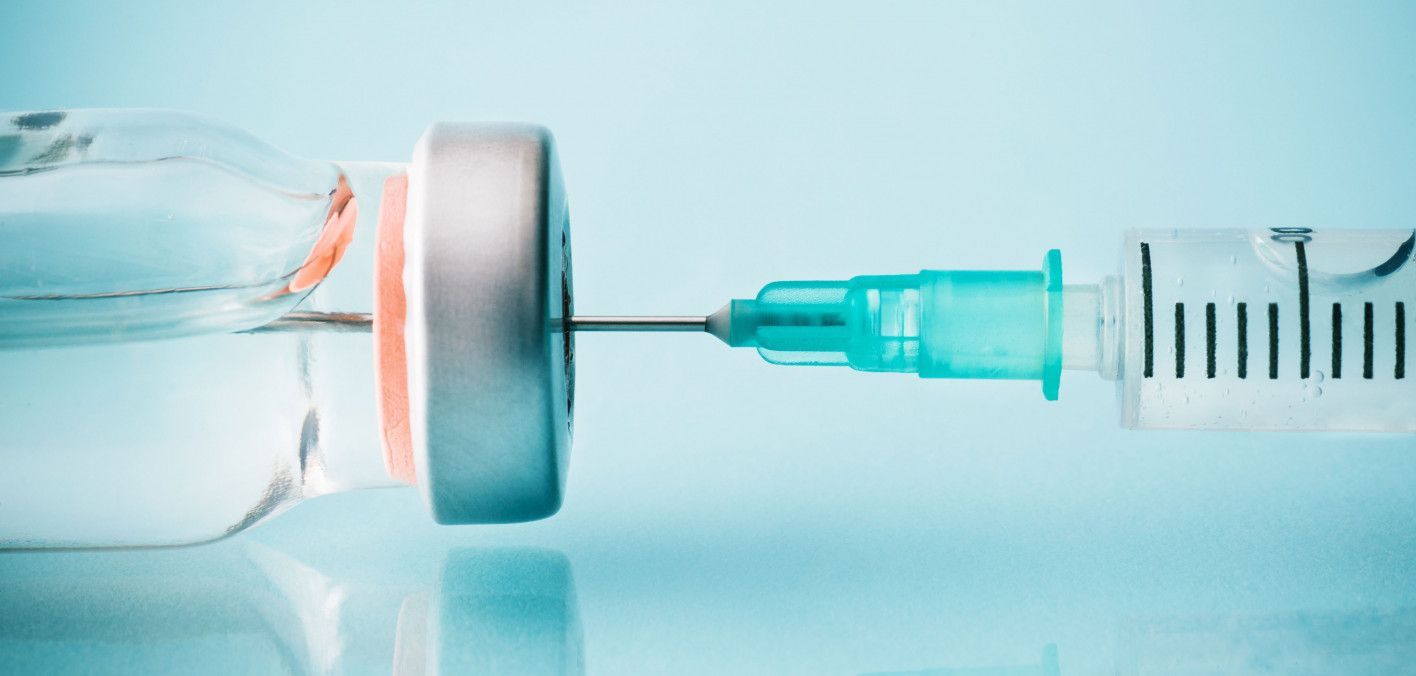
What Happens To Prep’s Effectiveness If I Don’t Take It As Directed
PrEP is highly effective when taken as directed, but its effectiveness can decrease if it is not taken consistently.
A study published in the journal The Lancet found that PrEP was 99% effective at preventing HIV infection in people who took it every day. However, the study also found that the effectiveness of PrEP decreased to 73% in people who took it less than 6 days per week.
Another study, published in the journal AIDS, found that PrEP was 96% effective at preventing HIV infection in people who took it consistently for 48 weeks. However, the study also found that the effectiveness of PrEP decreased to 73% in people who missed 1 to 7 doses during the study period.
These studies show that PrEP is most effective when taken consistently. If you are taking PrEP, it is important to talk to your doctor about how to make sure you are taking it correctly.
Here are some tips for taking PrEP consistently:
- Set a reminder on your phone or calendar to take your medication every day.
- Keep your medication in a safe place where you will not forget it.
- If you are going to be away from home for an extended period of time, make sure you have enough medication to last the entire trip.
- If you miss a dose, take it as soon as you remember. If it is more than 24 hours since you missed a dose, talk to your doctor.

What If I Forget To Take My Prep Pill?
If you forget to take your PrEP pill, you should take it as soon as you remember.
If it is more than 12 hours since you were supposed to take your pill, you should skip the missed dose and take your next dose at the usual time.
It is important to take your PrEP pills as prescribed. If you miss too many doses, you may not be protected against HIV infection.
Here are some tips for remembering to take your PrEP pills:
- Set an alarm on your phone.
- Keep your pills in a place where you will see them every day, such as by your toothbrush or on your nightstand.
- Ask a friend or partner to remind you to take your pills.
- Keep a backup supply of pills in case you lose your pills or forget to refill your prescription.
If you are concerned about forgetting to take your PrEP pills, you can talk to your doctor about other options, such as getting a PrEP shot.
Here are some additional things to keep in mind if you forget to take your PrEP pill:
- If you have unprotected sex within 72 hours of forgetting a dose, you should talk to your doctor about taking post-exposure prophylaxis (PEP). PEP is a medication that can help prevent HIV infection after exposure to the virus.
- If you have been taking PrEP for more than 72 hours and then miss a dose, you are still protected against HIV infection. However, it is important to start taking your pills again as soon as you remember.

If Prep Is So Effective, Why Do We Still Need Condoms?
Pre-exposure prophylaxis (PrEP) is a daily pill that can help prevent HIV infection. PrEP is highly effective, with studies showing that it can reduce the risk of HIV infection by up to 99%.
So, if PrEP is so effective, why do we still need condoms?
There are a few reasons. First, PrEP is not 100% effective. There is still a small chance of getting HIV while on PrEP, especially if you don't take the pill as prescribed.
Second, PrEP only protects against HIV. It does not protect against other sexually transmitted infections (STIs). Condoms are still the best way to protect yourself against STIs.
So, while PrEP is a very effective way to prevent HIV infection, it is not a replacement for condoms. Condoms are still an important part of HIV prevention and sexual health.

What Percent Of Gay Men On Prep Use Condoms?
One of the biggest concerns about PrEP is that it may lead to a decrease in condom use. Condoms are still the best way to protect yourself against HIV and other sexually transmitted infections (STIs).
A study published in the journal AIDS found that only 46% of gay and bisexual men on PrEP reported using condoms consistently. The study also found that men who were younger, white, and had a higher income were less likely to use condoms consistently.
Another study published in the journal Sexually Transmitted Diseases found that only 31% of gay and bisexual men on PrEP reported using condoms consistently.
The study also found that men who were younger, had more sexual partners, and engaged in more risky sexual behaviors were less likely to use condoms consistently.
There are a number of reasons why gay men on PrEP may not use condoms consistently. Some men may believe that they are no longer at risk for HIV infection because they are taking PrEP. Others may find condoms to be uncomfortable or inconvenient.
Still others may simply not think about using condoms when they are on PrEP.
It is important to remember that PrEP is not a replacement for condoms. Condoms are still the best way to protect yourself against HIV and other STIs. If you are taking PrEP, it is important to talk to your doctor about how to use condoms effectively.
Here are some additional reasons why gay men on PrEP may not use condoms consistently:
- False sense of security: Some men on PrEP may believe that they are no longer at risk for HIV infection because they are taking the medication. This is not true. PrEP is only effective if it is taken as prescribed. If a man misses a dose or takes the medication inconsistently, he is still at risk for HIV infection.
- Condom discomfort: Some men find condoms to be uncomfortable or inconvenient to use. This is a common reason why men choose not to use condoms, even when they are not on PrEP.
- Lack of awareness: Some men may not be aware of the importance of using condoms even if they are on PrEP. This may be due to a lack of education about HIV and PrEP, or it may be due to the belief that condoms are no longer necessary if a man is taking PrEP.
- Substance use: Men who use drugs or alcohol may be more likely to engage in risky sexual behaviors, such as not using condoms. This is because drugs and alcohol can impair judgment and decision-making.
- STIs: Men who have STIs may be more likely to engage in risky sexual behaviors, such as not using condoms. This is because STIs can increase the risk of HIV transmission.

A List Of FREE Prep Clinics (With Links!) In The Top 50 Markets
New York City:
New York City Department of Health: www1.nyc.gov/site/doh/index.page
Callen-Lorde Community Health Center: www.callen-lorde.org
Los Angeles:
Los Angeles LGBT Center: www.lalgbtcenter.org
APLA Health: www.aplahealth.org
Chicago:
Howard Brown Health: www.howardbrown.org
AIDS Foundation of Chicago: www.aidschicago.org
San Francisco:
San Francisco City Clinic: www.sfcityclinic.org
San Francisco AIDS Foundation: www.sfaf.org
Dallas:
AIDS Healthcare Foundation: www.aidshealth.org
Resource Center Dallas: www.myresourcecenter.org
Philadelphia:
Mazzoni Center: www.mazzonicenter.org
Philadelphia FIGHT Community Health Centers: www.fight.org
Houston:
Legacy Community Health: www.legacycommunityhealth.org
Avenue 360 Health and Wellness: www.avenue360.org
Washington, D.C.:
Whitman-Walker Health: www.whitman-walker.org
MetroHealth: www.metrohealth.org
Boston:
Fenway Health: www.fenwayhealth.org
Boston Medical Center: www.bmc.org
Atlanta:
AIDS Healthcare Foundation: www.aidshealth.org
Positive Impact Health Centers: www.positiveimpacthealthcenters.org
Phoenix:
Maricopa Integrated Health System: www.valleywisehealth.org
Ebony House: www.ebonyhouseinc.org
Tampa:
Tampa Family Health Centers: www.tampafamilyhc.com
Metro Inclusive Health: www.metrotampabay.org
Seattle:
Gay City: Seattle's LGBTQ Center: www.gaycity.org
Public Health - Seattle & King County: www.kingcounty.gov
Detroit:
Detroit Health Department: www.detroitmi.gov/health
Unified - HIV Health and Beyond: www.miunified.org
Minneapolis:
Red Door Clinic: www.reddoorclinic.org
Hennepin Healthcare: www.hennepinhealthcare.org
Miami:
Care Resource Community Health Centers: www.careresource.org
Miami-Dade County Health Department: www.miamidade.gov/health
Denver:
Denver Public Health: www.denverpublichealth.org
HeyDenver: www.heydenver.org
Orlando:
The Center Orlando: www.thecenterorlando.org
Orange County Health Department: www.orangecountyfl.net
Cleveland:
MetroHealth: www.metrohealth.org
Cuyahoga County Board of Health: www.ccbh.net
Sacramento:
One Community Health: www.onecommunityhealth.com
Sacramento County Public Health: www.saccounty.net
Portland:
Cascade AIDS Project: www.cascadeaids.org
Multnomah County Health Department: multco.us/health
St. Louis:
St. Louis Effort for AIDS: www.stlefa.org
Saint Louis County Department of Public Health: www.stlouisco.com
Pittsburgh:
Pittsburgh AIDS Task Force: www.patf.org
Allegheny County Health Department: www.alleghenycounty.us
Raleigh:
Wake County Human Services: www.wakegov.com
Alliance of AIDS Services - Carolina: www.aas-c.org
Charlotte:
Mecklenburg County Public Health: www.mecknc.gov
RAIN Charlotte: www.carolinarain.org
Indianapolis:
Damien Center: www.damien.org
Marion County Public Health Department: www.marionhealth.org
Baltimore:
Baltimore City Health Department: health.baltimorecity.gov
Chase Brexton Health Care: www.chasebrexton.org
San Diego:
San Diego LGBT Community Center: www.thecentersd.org
San Diego County Public Health: www.sandiegocounty.gov
Nashville:
Nashville CARES: www.nashvillecares.org
Metro Public Health Department of Nashville/Davidson County: www.nashville.gov
Kansas City:
Kansas City Health Department: www.kcmo.gov
Kansas City CARE Clinic: www.kccare.org
Columbus:
Equitas Health: www.equitashealth.com
Columbus Public Health: www.columbus.gov/publichealth
Salt Lake City:
Utah AIDS Foundation: www.utahaids.org
Salt Lake County Health Department: slco.org/health
Milwaukee:
ARCW (AIDS Resource Center of Wisconsin): www.arcw.org
Milwaukee Health Department: city.milwaukee.gov/health
Cincinnati:
Caracole: www.caracole.org
Cincinnati Health Department: www.cincinnati-oh.gov/health
San Antonio:
San Antonio AIDS Foundation: www.sanantonioaids.org
Metropolitan Health District: www.sanantonio.gov/health
Las Vegas:
Aid for AIDS of Nevada (AFAN): www.afanlv.org
Southern Nevada Health District: www.southernnevadahealthdistrict.org
Grand Rapids:
Grand Rapids Red Project: www.redproject.org
Kent County Health Department: www.accesskent.com/Health
Oklahoma City:
Oklahoma AIDS Care Fund: www.okaidscarefund.com
Oklahoma City-County Health Department: www.occhd.org
Greenville:
AIDS Upstate: www.aidsupstate.org
Greenville County Health Department: www.greenvillecounty.org
Norfolk:
LGBT Life Center: www.lgbtlifecenter.org
Virginia Department of Health: www.vdh.virginia.gov
Albuquerque:
UNM Truman Health Services: www.unmtruman.com
New Mexico Department of Health: www.nmhealth.org
Memphis:
Friends for Life Corporation: www.fflmemphis.org
Shelby County Health Department: www.shelbytnhealth.com
Austin:
Austin PrEP Access Project: www.austinprepaccessproject.com
Austin Public Health: www.austintexas.gov/department/health
Louisville:
Volunteers of America Mid-States: www.voamid.org
Louisville Metro Department of Public Health and Wellness: www.louisvilleky.gov
Hartford:
AIDS Connecticut: www.aids-ct.org
Hartford Gay & Lesbian Health Collective: www.hglhc.org
Jacksonville:
CAN Community Health: www.cancommunityhealth.org
Duval County Health Department: duval.floridahealth.gov
Buffalo:
Evergreen Health: www.evergreenhs.org
Erie County Department of Health: www2.erie.gov/health
New Orleans:
CrescentCare: www.crescentcarehealth.org
Louisiana Department of Health: ldh.la.gov
Birmingham:
Birmingham AIDS Outreach: www.birminghamaidsoutreach.org
Jefferson County Department of Health: www.jcdh.org
Greensboro:
Triad Health Project: www.triadhealthproject.com
Guilford County Public Health: www.guilfordcountync.gov
Fresno:
Fresno EOC Sanctuary and Youth Services: www.fresnoeoc.org
Fresno County Department of Public Health: www.co.fresno.ca.us
Harrisburg:
Alder Health Services: www.alderhealth.org
Pennsylvania Department of Health: www.health.pa.gov
West Palm Beach:
Compass Community Center: www.compassglcc.com
Florida Department of Health in Palm Beach County: palmbeach.floridahealth.gov
Albany:
Albany Damien Center: www.albanydamiencenter.org
Albany County Department of Health: www.albanycounty.com
Omaha:
Nebraska AIDS Project: www.nap.org
Douglas County Health Department: www.douglascountyhealth.com
Dayton:
Equitas Health: www.equitashealth.com
Public Health - Dayton & Montgomery County: www.phdmc.org
El Paso:
Border AIDS Partnership: www.borderaids.org
City of El Paso Department of Public Health: www.elpasotexas.gov
Rochester:
Trillium Health: www.trilliumhealth.org
Monroe County Public Health Department: www2.monroecounty.gov
Tucson:
Southern Arizona AIDS Foundation: www.saaf.org
Pima County Health Department: www.pima.gov
Tulsa:
Tulsa CARES: www.tulsacares.org
Tulsa Health Department: www.tulsa-health.org
Richmond:
Health Brigade: www.healthbrigade.org
Richmond City Health District: www.vdh.virginia.gov/richmond-city
Knoxville:
Positively Living: www.positively-living.org
Knox County Health Department: www.knoxcounty.org/health
Honolulu:
Life Foundation: www.life.foundation
Hawaii Department of Health: health.hawaii.gov
Des Moines:
Primary Health Care: www.phcinc.net
Polk County Health Department: www.polkcountyiowa.gov
Springfield:
AIDS Project of the Ozarks: www.aidsprojectoftheozarks.org
Springfield-Greene County Health Department: www.springfieldmo.gov
Spokane:
Spokane AIDS Network: www.san-nw.org
Spokane Regional Health District: srhd.org
Chattanooga:
Chattanooga CARES: www.chattanoogacares.org
Hamilton County Health Department: health.hamiltontn.org
Paducah:
Heartland CARES: www.hcares.org
Purchase District Health Department: www.purchasehealth.org
Madison:
AIDS Resource Center of Wisconsin: www.arcw.org
Public Health Madison & Dane County: www.publichealthmdc.com
Harlingen:
Valley AIDS Council: www.valleyaids.org
Cameron County Public Health: www.cameroncounty.us
Syracuse:
ACR Health: www.acrhealth.org
Onondaga County Health Department: ongov.net/health
Columbia:
South Carolina HIV/AIDS Council: www.schac.org
South Carolina Department of Health: www.scdhec.gov
Waco:
Central Texas AIDS Network: www.centexnet.org
Waco-McLennan County Public Health District: www.waco-texas.com
Shreveport:
Philadelphia Center: www.philadelphiacenter.org
Louisiana Department of Health: ldh.la.gov
Charleston:
Ryan White Wellness Center: www.ryanwhiteofcharleston.org
South Carolina Department of Health: www.scdhec.gov
Burlington:
Vermont CARES: www.vtcares.org
Vermont Department of Health: www.healthvermont.gov
Cedar Rapids:
Linn County Public Health: www.linncounty.org
Iowa Department of Public Health: idph.iowa.gov
South Bend:
AIDS Ministries/AIDS Assist: www.aidsministries.org
St. Joseph County Department of Health: www.sjcindiana.com
Eugene:
HIV Alliance: www.hivalliance.org
Lane County Public Health: www.lanecounty.org
Flint:
Wellness Services: www.wellnessaids.org
Genesee County Health Department: gchd.us
